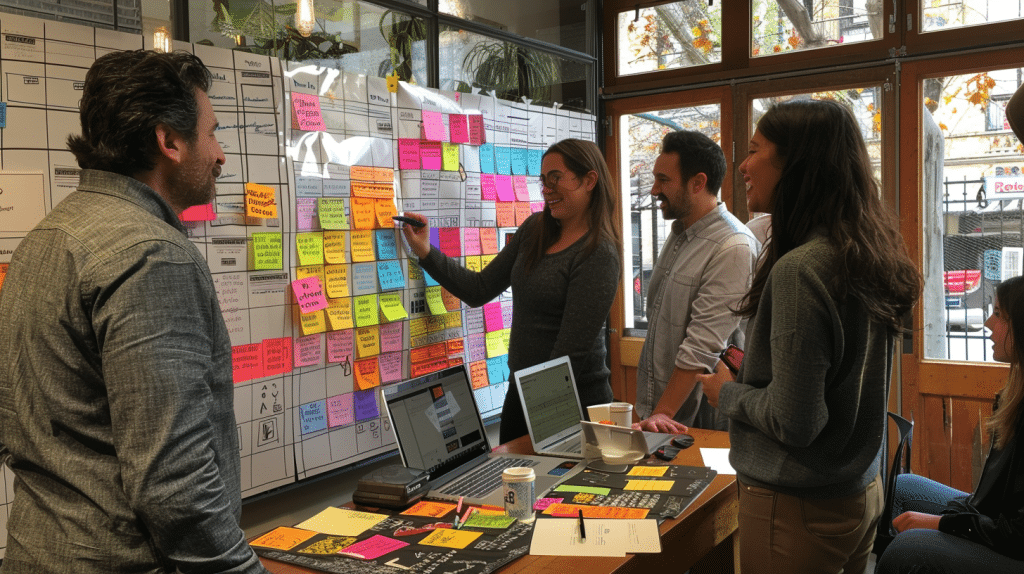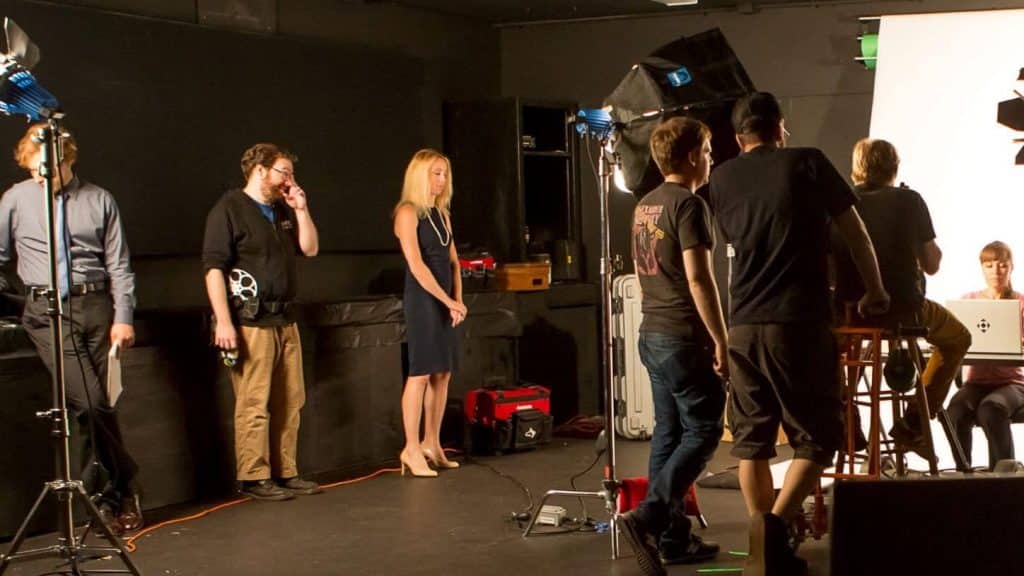The Ultimate Video Pre-Production Checklist: A Step-by-Step Guide

Why Pre-Production is Crucial
A well-planned video pre-production process is essential for any successful film or video production. Whether you’re creating a corporate video, branded content, commercial, or documentary, having a structured pre-production checklist can help you avoid costly mistakes, production delays, and overspending.
Pre-production ensures that:
- Budgeting is accurate and well-distributed.
- Filming locations are secured and properly scouted.
- The video production team is well-coordinated.
- The script and storyboard are refined to guide filming efficiently.
Skipping pre-production leads to unnecessary reshoots, increased costs, and scheduling conflicts, making the final product weaker. This guide provides a step-by-step breakdown of how to plan effectively.
Table of Contents
Step 1: Define the Purpose and Goals

Before starting any video production, clearly define your objectives to ensure the final output aligns with your brand’s goals. Without a structured plan, a video may end up lacking focus or failing to engage the target audience.
Key Questions to Answer in Pre-Production:
- What is the purpose of the video? (Marketing, storytelling, educational content, training video)
- Who is the target audience? Understanding their demographics, interests, and pain points ensures your content resonates.
- Where will the video be distributed? (Social media, website, YouTube, TV commercial, corporate presentation)
- What is the ideal video length? Shorter videos work best for Instagram Reels and TikTok, while long-form content is better for YouTube or corporate presentations.
- What emotion or action should the audience take after watching? Whether it’s buying a product, subscribing, or engaging with your brand, this goal should shape the storytelling approach.
Creating a pre-production planning document with answers to these questions keeps the entire video production process streamlined and efficient.
Step 2: Develop the Concept and Script

A compelling video concept ensures that every scene is purposeful and engaging. The script and storyboarding process should reflect your key messaging while considering cinematography, pacing, and visual storytelling techniques.
Key Steps in Script & Concept Development:
- Brainstorm unique video ideas that align with your brand identity and marketing goals.
- Write a structured script that includes dialogue, narration, and visual cues.
- Develop a shot list to guide the camera crew during filming.
- Create a storyboard to visualize each scene and transition.
- Plan voiceovers or interviews to ensure key messaging is covered.
- Consider a multi-camera setup for more dynamic filming techniques.
A refined script ensures that the filming process stays on track, reducing the risk of costly retakes and missed shots.
Step 3: Plan Your Budget

Accurate budgeting prevents unexpected costs from derailing production. A comprehensive pre-production budget should account for:
Key Budget Items in Pre-Production:
- Crew and talent fees (Directors, cinematographers, editors, and voiceover artists)
- Equipment rentals (Cameras, lighting rigs, audio gear, stabilizers)
- Location scouting and permits (Venue fees, travel costs)
- Post-production expenses (Editing, motion graphics, sound design)
- Marketing and distribution costs (If applicable for branded video content)
A well-structured budget ensures a cost-effective video production process while maintaining high-quality output.
Step 4: Assemble Your Video Production Team

The quality of your final product depends on hiring the right production crew. Whether you’re working with an in-house team or freelancers, having a well-defined production crew structure is essential.
Roles in a Video Production Team:
- Director: Manages the creative vision and direction.
- Cinematographer (DP): Oversees camera work, composition, and lighting.
- Producer: Handles scheduling, budgeting, and coordination.
- Sound Engineer: Ensures high-quality audio recording and mixing.
- Video Editor: Polishes the footage, adds transitions, motion graphics, and special effects.
For smaller-scale productions, some roles may be combined, but maintaining professional audio and lighting quality is always crucial.
Step 5: Secure Locations and Permits

Securing the right filming location is an essential part of the pre-production process. Factors such as lighting conditions, background noise, and legal permissions must be considered.
Location Scouting Checklist:
- Lighting & Sound Conditions: Avoid noisy areas and ensure sufficient lighting for cinematic video quality.
- Permits & Releases: Some public locations and private properties require film permits.
- Backup Locations: If filming outdoors, weather changes could disrupt production.
Choosing the right location enhances the overall production value and ensures smooth filming.
Step 6: Equipment & Technical Setup

Selecting the right video production equipment can significantly impact filming efficiency and visual quality.
Essential Equipment Checklist for Video Pre-Production:
- Camera Gear: Choose the appropriate DSLR, mirrorless, or cinema camera.
- Stabilizers: Use tripods, gimbals, or sliders for smooth camera movements.
- Lighting Equipment: Utilize softboxes, LED panels, and reflectors.
- Audio Recording Gear: Lavalier mics, shotgun mics, and audio mixers ensure crisp sound.
A pre-filming test of all equipment prevents technical failures on set.
Step 7: Production Scheduling

A well-planned video production schedule helps manage filming logistics, crew coordination, and time efficiency.
What to Include in Your Video Production Schedule:
- Call Sheets: Detailed breakdown of crew roles, call times, and shoot locations.
- Shot List Prioritization: Organize shots based on complexity, daylight availability, and talent availability.
- Break Times & Buffers: Avoid overloading the schedule to maintain productivity on set.
A clear production schedule minimizes downtime and ensures that filming wraps on time.
Step 8: Final Pre-Shoot Checks

Before filming begins, conduct pre-shoot inspections to eliminate potential errors.
Final Pre-Shoot Checklist:
- Confirm Equipment Readiness: Test cameras, mics, lighting, and storage.
- Recheck Location Logistics: Ensure all permits, transportation, and access arrangements are finalized.
- Run a Table Read or Rehearsal: Ensure actors and presenters are comfortable with their scripts.
A thorough pre-shoot check guarantees a smooth video production workflow.
Final Thoughts: Why Pre-Production is Essential

Effective video pre-production planning leads to higher-quality content, fewer delays, and more impactful storytelling. By following this comprehensive pre-production checklist, your video will be:
✔️ Well-planned and executed efficiently
✔️ More visually compelling and engaging
✔️ Optimized for budget and time efficiency
✔️ Professionally shot with high production value
Need Expert Help with Video Pre-Production?
At Skillman Video Group, we specialize in professional video production, pre-production planning, and brand storytelling. Let’s bring your video vision to life with expert guidance.
📩 Contact Skillman Video Group to start planning your next video project today!
🚀 FAQ: Video Pre-Production Checklist & Planning

Here’s a list of frequently asked questions about pre-production, budgeting, and planning for video projects.
1. What is video pre-production, and why is it important?
Pre-production is the planning phase of video production, where all logistics, budgeting, scripting, and scheduling happen before filming starts. It ensures that the production process runs smoothly, reducing costs, avoiding delays, and guaranteeing a professional final product.
Without pre-production, teams risk last-minute issues, disorganization, and costly mistakes, leading to missed deadlines and inconsistent results.
2. How long does the pre-production process take?
The duration of pre-production varies depending on the complexity of the project:
- Small projects (social media videos, interviews): 1–2 weeks
- Corporate videos & branded content: 3–6 weeks
- Commercials & short films: 6–8 weeks
- Documentaries & large productions: Several months
Factors like script revisions, talent casting, location permits, and budgeting can extend the timeline.
3. What are the essential steps in pre-production?
The pre-production process involves:
- Defining goals & target audience
- Writing a script & creating a storyboard
- Budgeting & securing funding
- Hiring a production team & cast
- Selecting filming locations & obtaining permits
- Planning the production schedule & logistics
- Testing equipment & rehearsing before filming
Skipping any of these steps can lead to delays, budget overruns, or technical issues.
4. How much does video pre-production cost?
The cost of pre-production varies based on factors like:
- Script development & concept creation
- Location scouting & permits
- Casting & talent fees
- Pre-production meetings & logistics planning
- Hiring a video production company or freelancers
For a corporate video or commercial, pre-production can range from $2,000 to $10,000+, while larger projects (e.g., documentaries, TV ads) may cost significantly more.
5. Do I need a storyboard for my video project?
Yes! A storyboard helps visualize each shot, ensuring efficient filming and seamless editing. It allows directors, cinematographers, and editors to pre-plan camera angles, lighting, and visual effects before production begins.
For simpler projects, a shot list can be used instead, listing all the necessary shots to keep production organized.
6. What should be included in a production schedule?
A well-structured video production schedule should include:
- Call times for crew & talent
- Filming locations & permits
- Shot list & scene breakdown
- Equipment setup & breakdown times
- Meal breaks & contingency time buffers
Scheduling helps avoid production delays and ensures that every aspect of the shoot stays on track.
7. What equipment is essential for a professional video shoot?
Key video production equipment includes:
- Camera gear (DSLR, mirrorless, or cinema cameras)
- Stabilizers (tripods, gimbals, sliders)
- Lighting (softboxes, LED panels, reflectors)
- Audio equipment (shotgun mics, lavalier mics, field recorders)
- Extra batteries, memory cards, and storage devices
Testing all technical equipment in pre-production prevents on-set failures and reshoots.
8. What are common mistakes to avoid in pre-production?
Some of the biggest pre-production mistakes include:
- Not defining clear video objectives
- Skipping budgeting & underestimating costs
- Failing to secure permits or location access
- Not hiring the right production team
- Overlooking audio & lighting quality
- Not testing equipment before the shoot
Proper pre-production planning helps eliminate these risks, leading to smoother production days.
9. Can I handle pre-production on my own, or should I hire professionals?
For small-scale video projects, handling pre-production independently may work, but for professional-quality video production, hiring an experienced production team is highly recommended.
A professional video production company helps with:
- Concept development & scriptwriting
- Location scouting & talent casting
- Scheduling & technical setup
- Seamless post-production & editing
Working with professionals ensures a higher-quality final product and avoids common production challenges.
10. How can Skillman Video Group help with pre-production?
At Skillman Video Group, we offer end-to-end video production services, including:
- Creative direction & script development
- Professional cinematography & crew hiring
- Pre-production planning & budget management
- Post-production editing & branding integration
👉 Contact us today to get started on your next video project!
Share:
Search our blog:
Follow us on:
